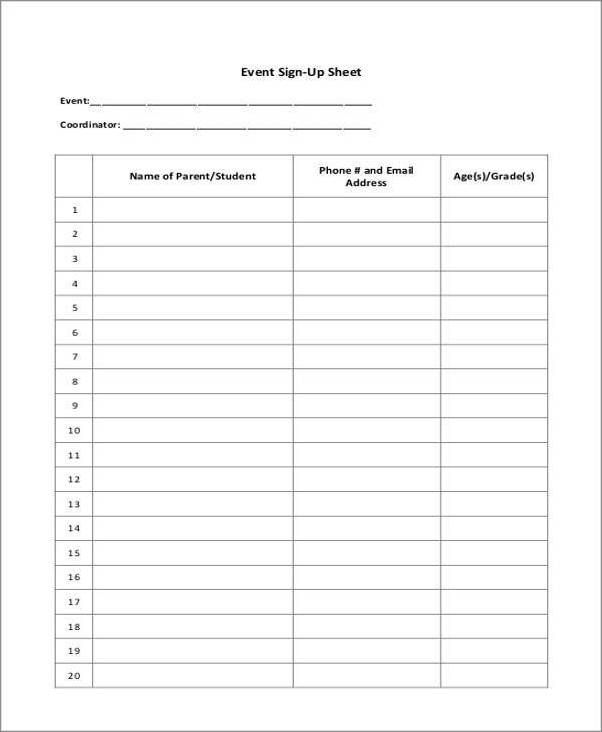Planning an event can be an exciting but daunting task. From finding a venue to organizing the guest list, there are many details to consider. One crucial aspect of event planning is creating a sign-up sheet. This simple tool can help you keep track of attendees, gather important information, and ensure a smooth and successful event.
In this guide, we will explore everything you need to know about creating an event sign-up sheet.
What is an Event Sign Up Sheet?
An event sign-up sheet is a document that allows individuals to register their attendance at an event. It typically includes fields for participants to provide their name, contact information, and any other relevant details. The sign-up sheet serves as a way to collect data and keep track of attendees, ensuring that you have all the necessary information to plan and execute the event effectively.
Event sign-up sheets can be used for various types of events, including conferences, workshops, fundraisers, parties, and more. They can be created in various formats, such as online forms, paper sheets, or electronic spreadsheets, depending on the preferences and needs of the event organizer.
Why Do You Need an Event Sign-Up Sheet?
Having an event sign-up sheet offers several benefits for both event organizers and attendees:
- Organizational purposes: An event sign-up sheet helps you keep track of the number of attendees, collect contact information, and gather any specific requirements or preferences. This information is essential for logistics planning and ensures that you can communicate effectively with participants before and after the event.
- Attendance management: By having participants sign up for an event, you can manage the number of attendees and make necessary arrangements accordingly. This ensures that you don’t exceed the venue’s capacity or run out of resources.
- Personalization: With an event sign-up sheet, you can gather valuable information about your attendees, such as their interests, dietary restrictions, or special needs. This allows you to personalize the event experience and cater to their specific requirements.
- Follow-up communication: The contact information collected through the sign-up sheet enables you to send follow-up emails or newsletters to attendees. This helps you maintain engagement and build relationships with your audience beyond the event.
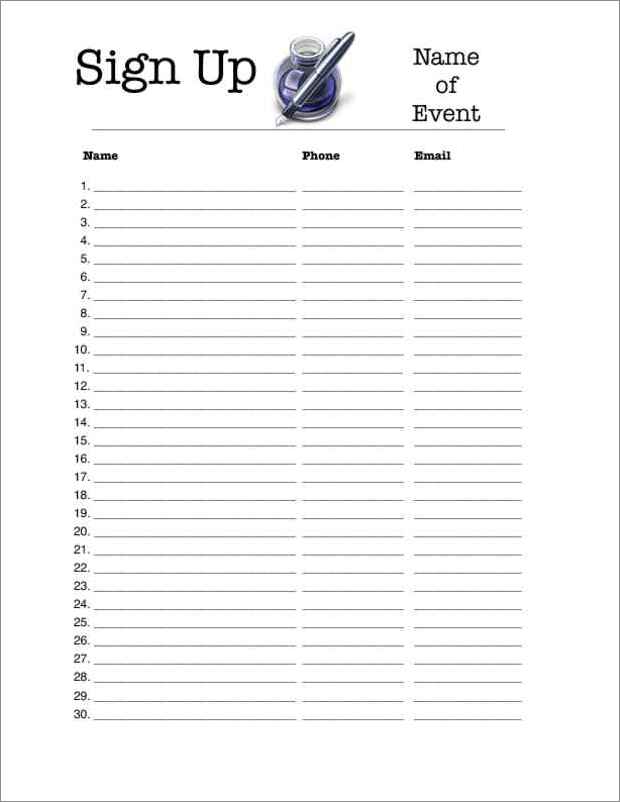
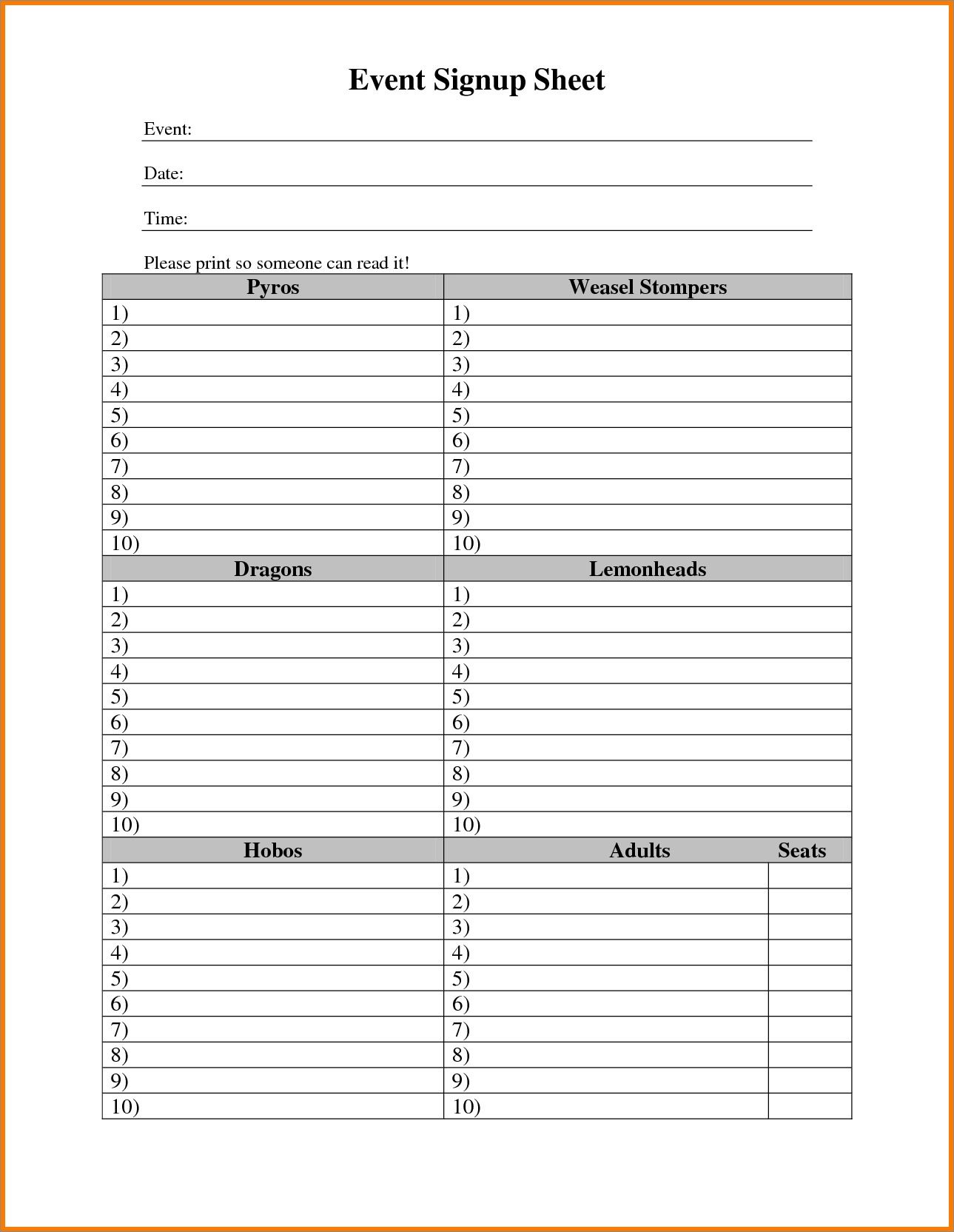
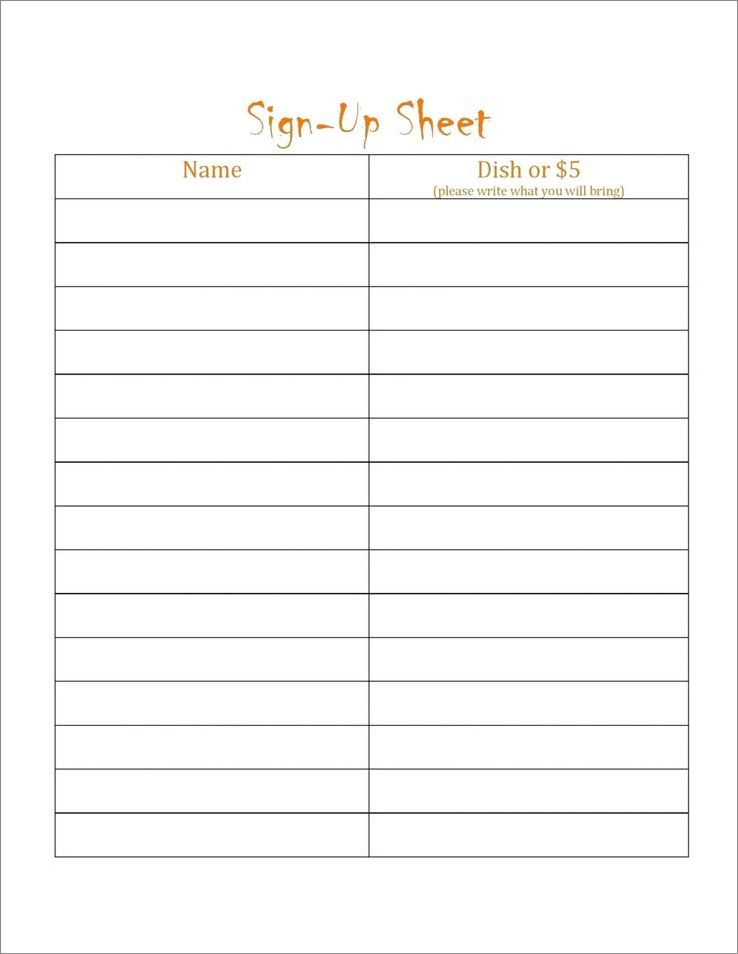
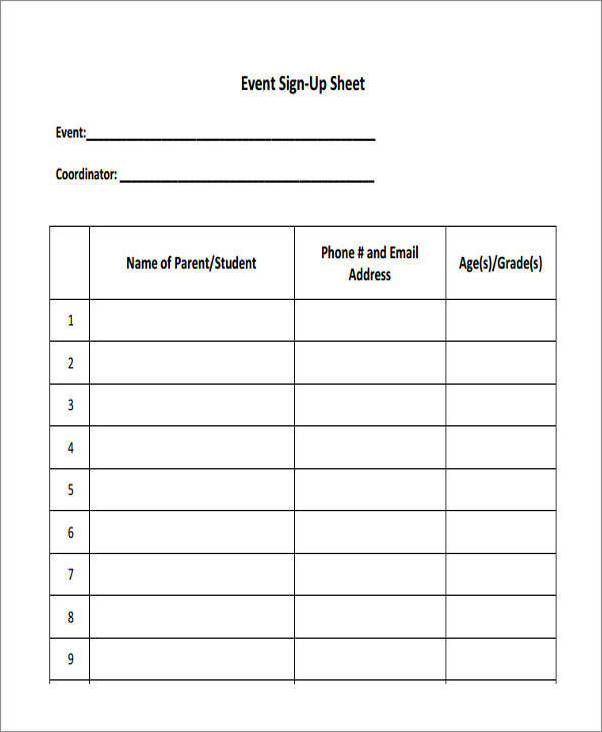
How to Create an Event Sign-Up Sheet
Creating an event sign-up sheet involves several steps. Follow these guidelines to ensure that you gather all the necessary information and make the sign-up process seamless for your attendees:
1. Determine the Sign-Up Method
Before creating the sign-up sheet, decide on the method you want to use for participants to sign up. You can choose between online forms, paper sheets, or electronic spreadsheets. Consider the nature of your event and the preferences of your target audience when making this decision.
2. Identify the Required Fields
Next, determine the information you need to collect from attendees. The most common fields include:
- Name: Ask for the participant’s full name to address them properly.
- Contact Information: Gather email addresses, phone numbers, or any other preferred method of contact to communicate with attendees effectively.
- Organization or Affiliation: If applicable, ask participants to provide the organization they represent or their affiliation with the event.
- Special Requirements: Determine if there are any specific needs or preferences attendees may have, such as dietary restrictions, accessibility requirements, or seating preferences.
3. Design the Sign-Up Sheet
Once you have identified the required fields, design the sign-up sheet accordingly. If you’re creating an online form, you can use platforms like Google Forms or Wufoo to create a professional-looking form. For paper sheets, use a clear and legible layout that leaves enough space for participants to fill in their information.
4. Test the Sign-Up Process
Before making the sign-up sheet available to participants, test the sign-up process yourself. Ensure that all the necessary fields are working correctly and that the form is easy to use and understand. This step helps you identify any potential issues or improvements before they reach your attendees.
5. Promote the Sign-Up Sheet
Once your sign-up sheet is ready, it’s time to promote it and encourage attendees to register. Utilize various marketing channels, such as social media, email newsletters, or event websites, to reach your target audience. Communicate the benefits of attending the event and emphasize the importance of signing up in advance.
6. Collect and Manage the Data
As participants sign up, collect and manage the data effectively. If you’re using an online form or electronic spreadsheet, make sure the data is organized in a way that is easy to access and analyze. Regularly update the attendee list and communicate with participants as needed.
7. Follow Up with Attendees
After the event, follow up with attendees to gather feedback and thank them for their participation. Use the contact information collected through the sign-up sheet to send personalized emails or surveys. This step helps you maintain engagement and build a community around your events.
Conclusion
An event sign-up sheet is a valuable tool for event organizers to collect attendee information, manage registrations, and personalize the event experience. By following the steps outlined in this guide and implementing the top tips provided, you can create an effective sign-up sheet that enhances your event planning process. Remember to communicate the benefits of signing up and regularly update and engage with your attendees to build lasting relationships.
Event Sign-up Sheet Template Excel – Download
